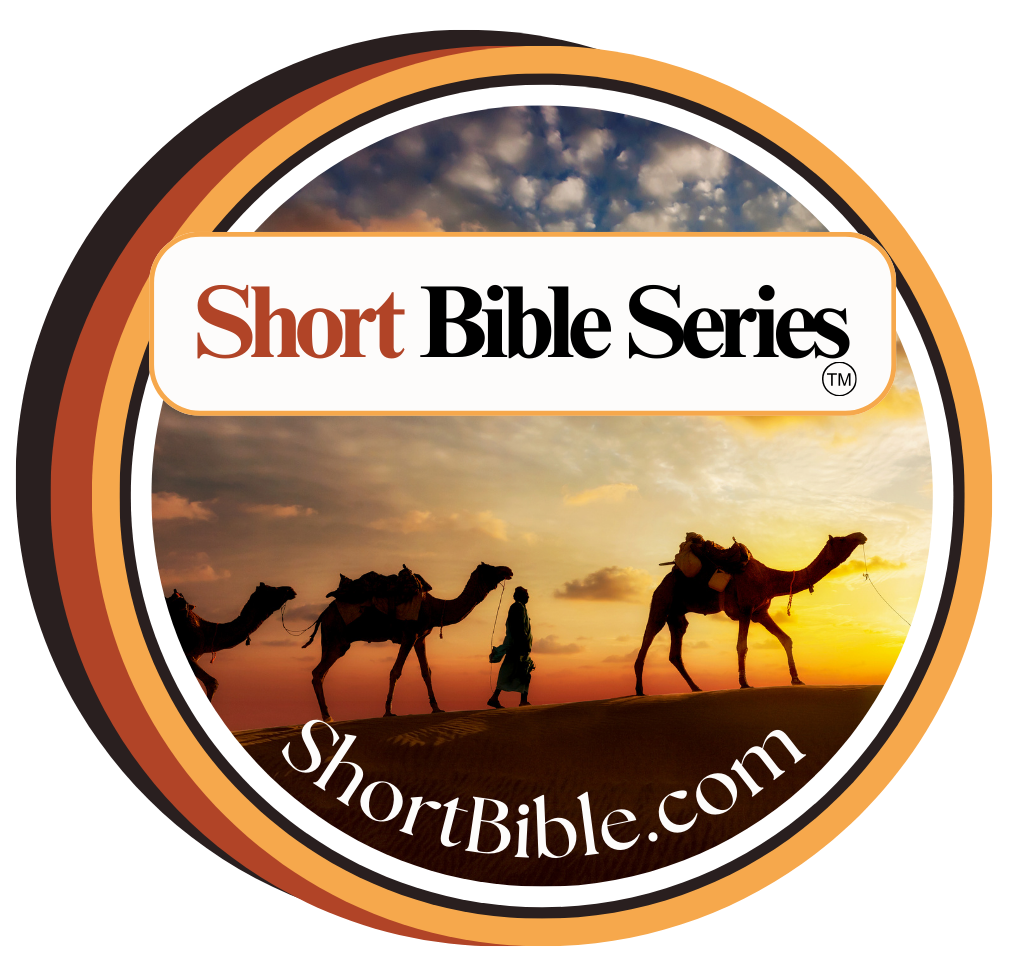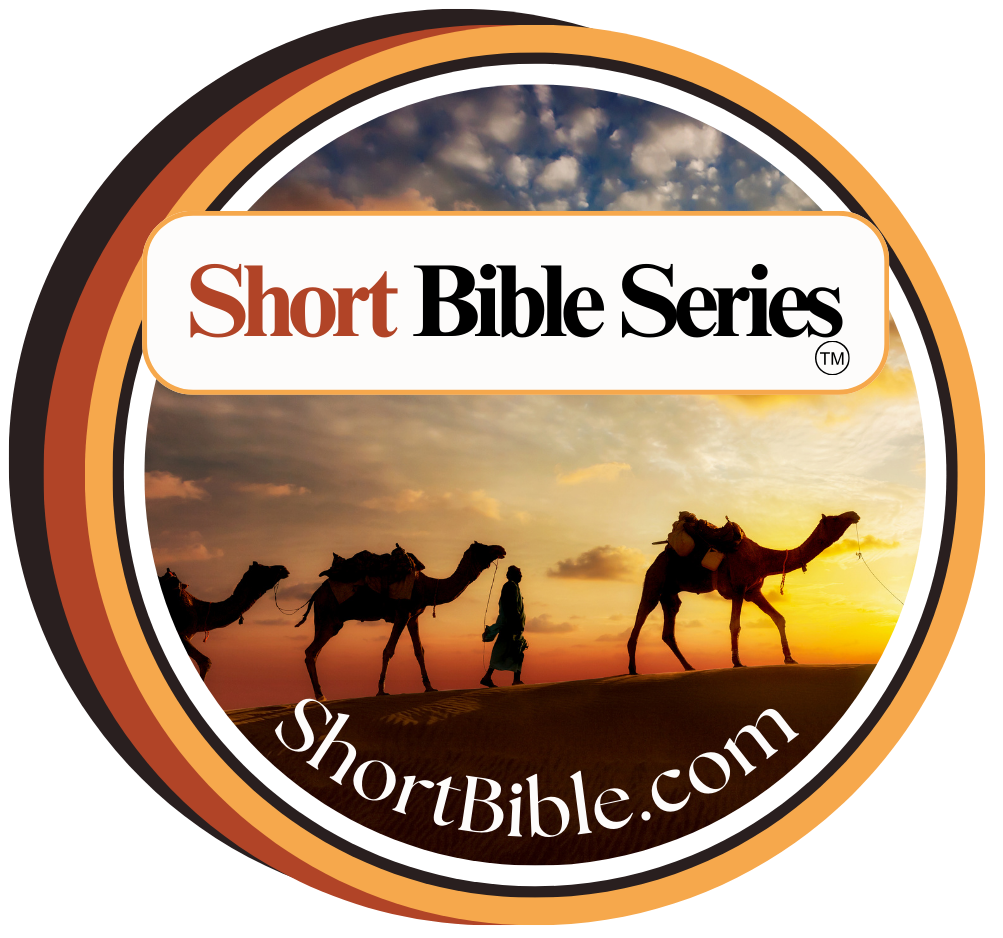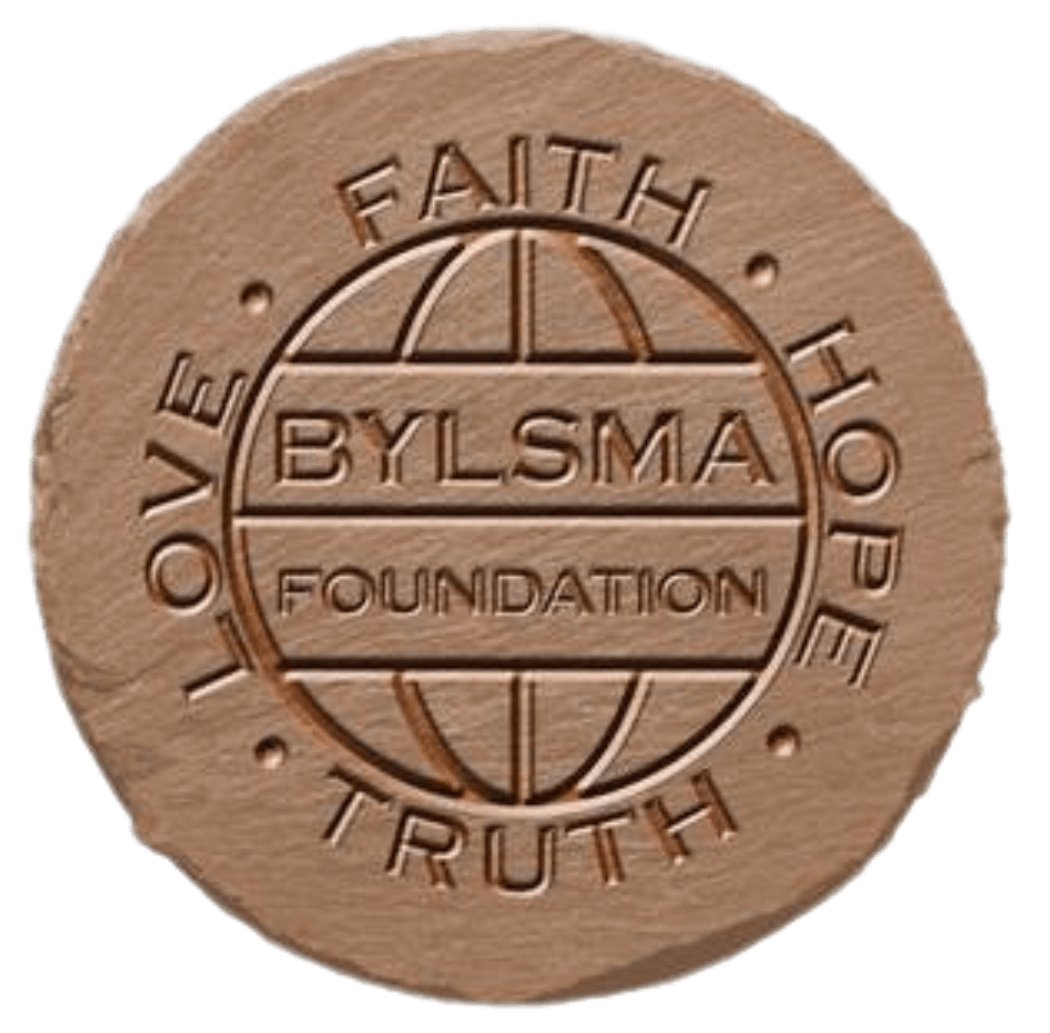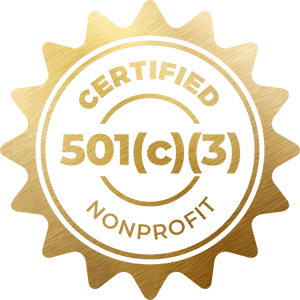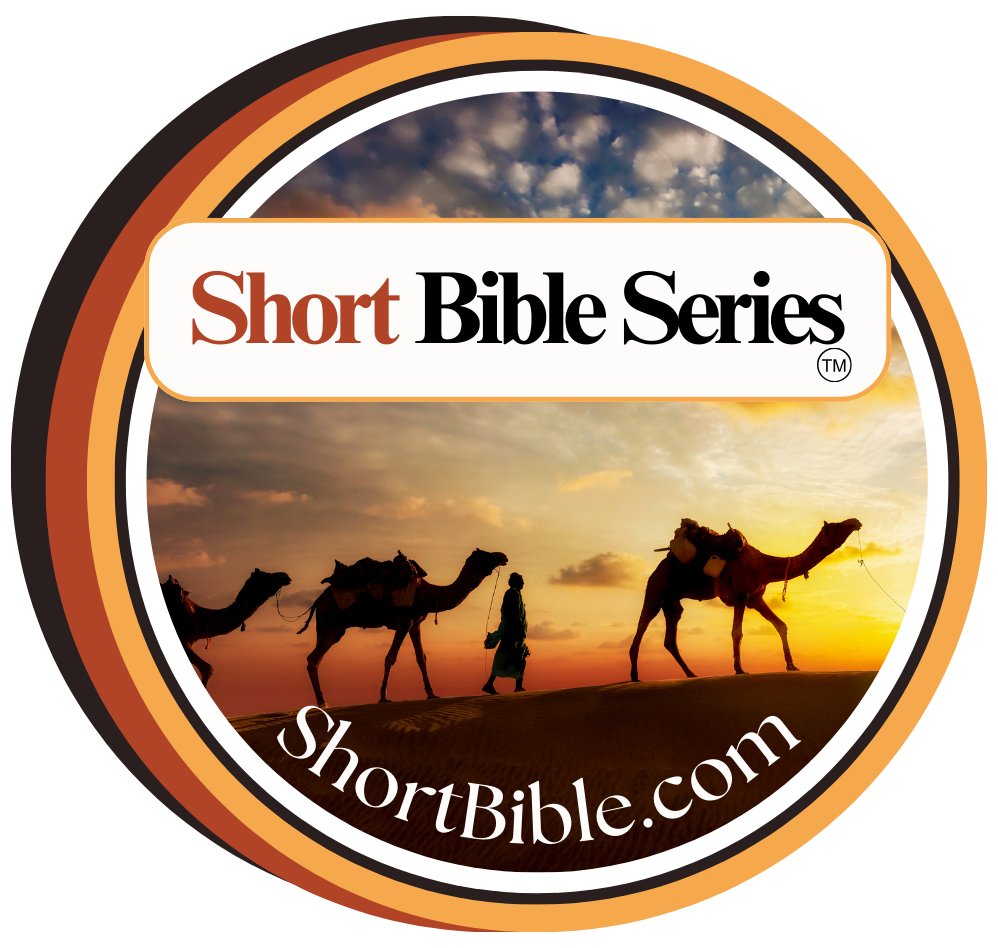Frequently Asked Questions About The Short Bible
How is this book different from the entire Bible?
The Short Bible summarizes all the main stories and messages of the Bible in 25 easy‐to‐read chapters, and it is organized in chronological order like a modern book: it has a distinct beginning, a plot that evolves over time with multiple characters, and a distinct conclusion. As a summary that also eliminates the duplication of stories that appears in the Bible, it is much shorter—about 17% of the length of the full Bible. Additional details help the reader understand the context and meaning of the stories and messages, and several appendixes provide reference information. The Short Bible is the first book ever written that summarizes all 66 books of the Bible, and it does so in a clear and logical manner.
Why did the author write this book?
Many people own a copy of the Bible but have not read all of it because it is a very long and complicated collection of books that was not organized in chronological order. Others who want to read the entire Bible had not been able to finish it because they don’t have the time and it seems to include unnecessary information. Thus, reading all of it and understanding all its messages is a challenge. So many people have ignored it or just focused on understanding certain parts. This limits their understanding of the essential meanings of the Bible and how “all the pieces of the puzzle” fit together.
While all parts of the Bible may be important in some way, certain parts were more central to the key messages than others. A shorter version that summarizes the key events and characters in historical order helps readers better understand the Bible in a short amount of time. Many others have not read any part of the Bible because they aren’t interested in religious issues, and many have only read or heard of parts of it. While the secular world refers to many Bible stories (such as David and Goliath, the Prodigal Son, and Good Samaritan), many don’t know their context or essential meanings. A condensed version of the basic Bible stories and messages helps the casual reader understand the essential content and characters.
Who is the intended audience?
The book was written for multiple audiences, with one exception. Christians who have never read the entire Bible can read this summary to gain an understanding of how all the main messages tie together. Those who had already read the Bible will gain new insights by reading a shorter version that contains clarifying information while “connecting the pieces of the puzzle.”
The book is also meant for others have not read any part of the Bible because they aren’t interested in religious issues. Educated people should at least know the basic stories and messages of the Bible, the most read book of all time, and the types of literature it contains. Educated atheists and agnostics, the curious, and those who have never heard or read any of the stories will all benefit from reading the book. Finally, the book was written for those who simply want to read an interesting book that has important messages about life. The text does not contain religious jargon, and it eliminates unnecessary wording, just as a skilled journalist reports events and relevant quotes along the way.
The book is not meant to be read to children or by children. The readability of its content (vocabulary, sentence structure, concepts) is appropriate for people who are at least 16 years old. Moreover, the concepts of the Bible are deep, and many of the events require emotional maturity. If the Bible was made into a movie, it would be R‐rated.
How many books of the Bible are summarized?
All 66 books are summarized in some way. Most of the stories and messages of the 39 books of the Old Testament are woven together in a 12‐chapter narrative that covers from Genesis to Malachi. Two other chapters cover books that are not part of the chronological story. One of these chapters is about Biblical poetry and contains 13 complete Psalms (they are not summarized). The other chapter summarizes unique books: Proverbs, Ecclesiastes, Job, Jonah, and the Song of Solomon. In the New Testament, all 27 books are summarized in 11 chapters.
How is The Short Bible organized?
After a preface and introduction chapter, Part 1 contains a chronological summary of the Old Testament, covered in 12 short chapters. Summaries of six books that are not part of the chronology are contained in two chapters at the end of Part 1. Part 2 contains a summary of the New Testament, prefaced with information about what happened in the 400 years between the last Old Testament book and the beginning of the New Testament.
An epilogue discusses what happened after the last book (Revelation) was written, and the author concludes with his personal perspective about what it all means for today’s reader. The book ends with seven appendixes that provide reference information (books of the Bible in the order they appear, summary chronology, index and glossary, scripture verses quoted, other books to consider reading, alignment of the book chapters with the Bible’s books, and 11 maps). The details of the contents are provided via the link at the bottom of this page.
How does The Short Bible align with all 66 books of the Bible?
All the 39 Old Testament books are summarized in Part 1. All 27 books of the New Testament are summarized in Part 2. An alignment document shows what books of the Bible are summarized in each of The Short Bible chapters (see Bible alignment link at the bottom of this page.)
What version of the Bible was used to write The Short Bible?
Many versions of the Bible are available in English and each is slightly different. After reviewing these versions, the New International Version (NIV) was selected as the initial version from which the summary started. The text was then condensed, simplified, and paraphrased so the book would be shorter and easier to understand.
Other than a summary of the books of the Bible, what else does The Short Bible contain?
Besides the summary of the Bible that spans 25 chapters, The Short Bible has five other sections.
~ A preface explains why and how the book was written.
~ An introductory chapter provides an overview of basic information about the Bible. This includes how it was written and organized, who the authors were, the types of literature it contains, the main themes that run throughout the Bible, how to interpret Biblical passages, and how God relates with humans.
~ An epilogue appears after the summary of Revelation, the last book written, to briefly describe what has happened to the Christian movement.
~ The author provides his own perspective on the implications of the Bible messages for the world and individuals.
~ Seven appendixes provide reference information, including an index/glossary, the scripture verses quoted, how the chapters of the book align with the entire Bible, and 11 maps.
In what languages is The Short Bible available?
As of Fall 2025, The Short Bible is available in English and Spanish versions (hard cover, paperback, eBook, audiobook). The Simplified Short Bible is available in English, French, German, Portuguese, and Tagalog in paperback and eBook formats. The Very Short Bible is available in Spanish and Farsi.
When funds are available to create more translations, one or more versions will be published in Arabic, Bengali, Chinese, Croatian, Estonian, Greek, Hebrew, Hindi, Indonesian, Italian, Japanese, Korean, Nepali, Pashto, Polish, Romanian, Russian, Sinhalese, Swahili, Tamil, Thai, Turkish, Ukrainian, and Zulu. Books in other languages may be translated later. The intention is that each translation will be available in paper, e-book, and audiobook formats.
Contributions to support more translations can be made to the Bylsma Foundation (see link at the bottom of this page.)
What is the difference between The Short Bible and the other versions in the series?
Three other versions of The Short Bible are available in English.
(1) The Simplified Short Bible is shorter than the full edition (288 pages vs 410 pages) and easier to read (the text is written for those who are at least 10 years old). The Simplified version also contains a pronunciation guide for the unusual names and places mentioned in the Bible.
(2) A Simplified Student Edition includes many reflection questions for deeper study. These questions and tasks relate to the content of the chapters as well as to the book as a whole. The Student edition is appropriate for those in secondary school and for adults. (Both the pronunciation guide and the reflection questions are available separately at no charge using links at the bottom of this web page.)
(3) The Very Short Bible: The Condensed Story of the Old and New Testaments is the latest edition and is shortest book in the series (less than 200 pages). It can be read in 1-2 days.
Will other versions of The Short Bible be available in the future?
Versions of The Simplified Short Bible will be available in other languages when funding is available. In addition, a shorter version for children may be developed later, and The Very Short Bible is now available and can be read in 1-2 days.
Is there a study guide to accompany the book?
Yes, a separate study/reflection guide is available free of charge. It can be downloaded and reproduced without the author’s permission (using the link at the bottom of this page). The guide provides suggestions for studying and reflecting on the entire book as well as its individual chapters. The tasks can be undertaken by individuals or discussed collectively in a small or large group. The tasks are challenging and are written to help readers understand, analyze, apply, and wrestle with the text. The guide is also included in the Student edition of The Simplified Short Bible.
Doesn’t the Bible say that nobody should add or take away from its contents?
Several verses say that what was written should not have anything added or removed, but these verses only apply to what was written in that document, not to all of scripture. The idea is first mentioned in Deuteronomy 4:2 and is written again later (Deut 12:32, Prov 30:6). But many other books of the Bible were written later, including all the books of the New Testament. Revelation 22:18–19 also contains this idea.
Revelation was a letter written by John around 95 AD and contains prophecies about what will happen just before Jesus returns to earth. In this case, the verses are specific to this part of the scriptures — John wrote the letter to seven churches in Asia Minor when others were writing their own prophecies related to the persecutions of Christians. He did not know his letter would be the last one included in the canon when the Bible was compiled more than 300 years later by the Council of Carthage. If these verses were taken literally, no other book would be included in the Bible after Deuteronomy.
Since the books of the Bible were not approved as being authoritative until centuries later, authors didn’t know their writings would become part of a highly respected Bible. Moreover, if these verses applied to all scriptures, anybody who writes about the Bible and explains its meanings would be guilty of violating these admonitions. Thousands of books have been written to explain parts of the Bible over the centuries, and millions of sermons have done the same, and people don’t have a problem with this.
Finally, The Short Bible explicitly states it is an abbreviated version of the Bible, which means it intentionally leaves out parts of it in order to make the story shorter. (This is similar to the Bible stories written for children.)
How will the profits from the sale of the books be used?
Approximately 90% of the royalties earned by the author will be channeled into the Bylsma Foundation to pay for the translation and publication of the book in other languages and to support educational and non‐profit organizations that help people in need, promote justice in the world, seek and spread the truth, help others understand the stories and meanings of the Bible, and encourage those who need good news.
